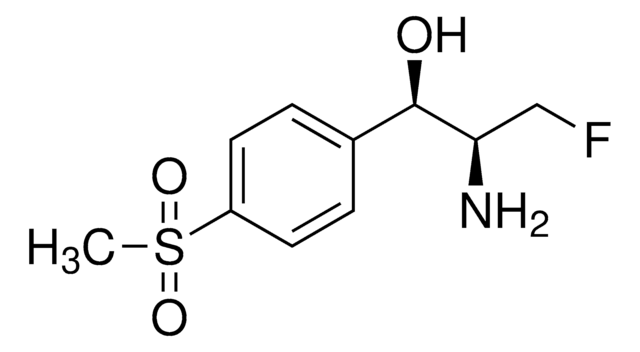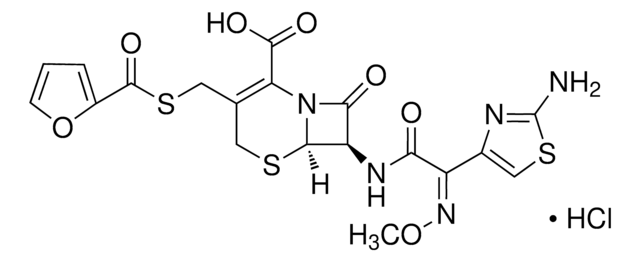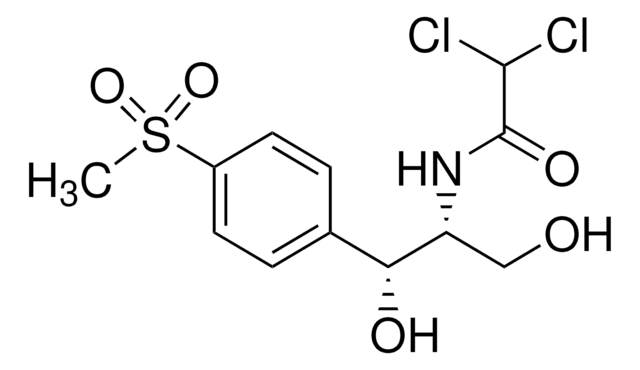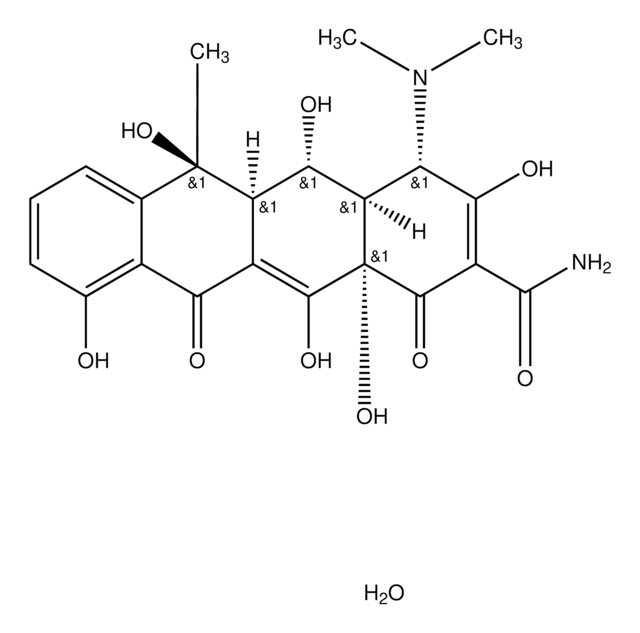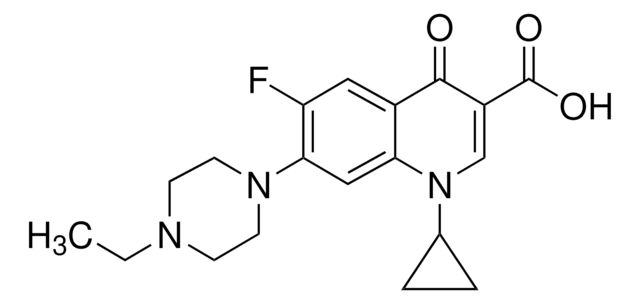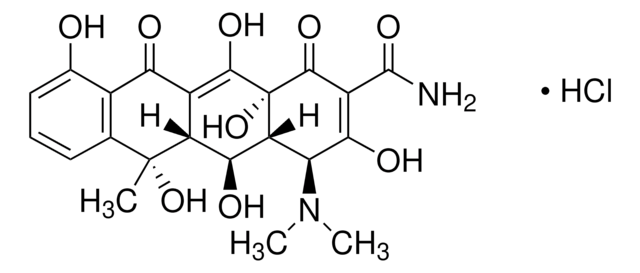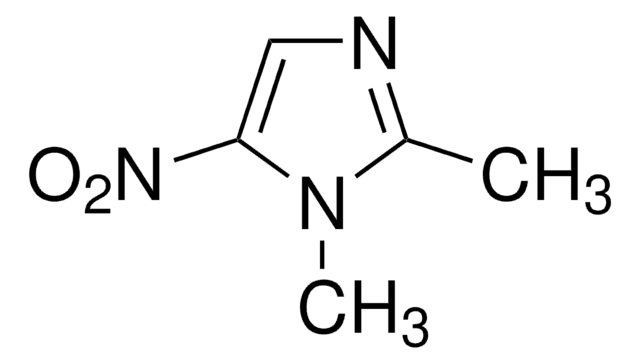F1427
Florfenicol
analytical standard, for drug analysis
Synonym(s):
Aquafen, Nuflor, SCH-25298, [R-(R*,S*)]-2,2-Dichloro-N-[1-(fluoromethyl)-2-hydroxy-2-[4-(methylsulfonyl)phenyl]ethyl]acetamide
About This Item
Recommended Products
grade
analytical standard, for drug analysis
Quality Level
form
solid
technique(s)
HPLC: suitable
gas chromatography (GC): suitable
application(s)
forensics and toxicology
pharmaceutical (small molecule)
veterinary
format
neat
SMILES string
CS(=O)(=O)c1ccc(cc1)[C@@H](O)[C@@H](CF)NC(=O)C(Cl)Cl
InChI
1S/C12H14Cl2FNO4S/c1-21(19,20)8-4-2-7(3-5-8)10(17)9(6-15)16-12(18)11(13)14/h2-5,9-11,17H,6H2,1H3,(H,16,18)/t9-,10-/m1/s1
InChI key
AYIRNRDRBQJXIF-NXEZZACHSA-N
Looking for similar products? Visit Product Comparison Guide
General description
Application
- To measure florfenicol and its main metabolite florfenicol amine in tilapia meat by solid phase extraction (SPE) and ultra high-performance liquid chromatography-tandem mass spectrometry (UHPLC-MS/MS)
- Multi-residue analysis of three amfenicols in animal feed samples by HPLC-MS/MS method, following European Commission Decision 2002/657/EC(2)Determination of florfenicol in different animal feedstuff samples by thin layer chromatography (TLC) coupled with HPLC-UV detection
- Residue analysis of florfenicol in broiler meat and liver samples by a reversed phase-HPLC method in combination with UV detection at 223 nm
- Competitive indirect-chemiluminescent enzyme-linked immunosorbent assay (CL-ELISA) based quantitative analysis of florfenicol and its major metabolite florfenicol amine in chicken muscle samples, validated as per Commission Decision 2002/657/EC
Other Notes
Signal Word
Danger
Hazard Statements
Precautionary Statements
Hazard Classifications
Aquatic Acute 1 - Aquatic Chronic 1 - Repr. 2 - STOT RE 1
Target Organs
Liver,Brain,Testes,Spinal cord,Blood,gallbladder
Storage Class Code
6.1C - Combustible acute toxic Cat.3 / toxic compounds or compounds which causing chronic effects
WGK
WGK 3
Flash Point(F)
Not applicable
Flash Point(C)
Not applicable
Personal Protective Equipment
Choose from one of the most recent versions:
Already Own This Product?
Find documentation for the products that you have recently purchased in the Document Library.
Customers Also Viewed
Our team of scientists has experience in all areas of research including Life Science, Material Science, Chemical Synthesis, Chromatography, Analytical and many others.
Contact Technical Service

